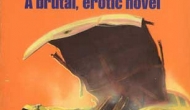 Every now and again, a pair of dates collide on the calendar that, juxtaposed, naturally create the conditions of chaos and comedy. Such a time will occur this Easter Sunday, March 31, which happens to immediately precede Monday, April 1, better known as April Fool’s Day.
Every now and again, a pair of dates collide on the calendar that, juxtaposed, naturally create the conditions of chaos and comedy. Such a time will occur this Easter Sunday, March 31, which happens to immediately precede Monday, April 1, better known as April Fool’s Day.
I cannot help but think there’s some opportunity lurking in the nanoseconds ‘twixt the two. As if the Christian appropriation of a Pagan rite of spring wasn’t silly enough to celebrate (if you can find an Easter egg in the Bible, they serve you Hasenfeffer in heaven – or hell, depending), there are surely other hijinks to be had. To my mind, this Easter is effectively April Fool’s Day Eve or, perhaps we should just call the 48 hour span Easter Fool’s Day.
The best way to enjoy Easter Fool’s Day is to taunt children with the prospect of chocolate wrapped in pastel-colored foil. It was for these occasions that carob was invented. If you don’t believe that “basket cases” start with the Easter basket, you’ve never had the misfortune of eating a hollow carob bunny.
The tropical pods plucked from the carob tree have long been used as a healthy alternative to chocolate, which has yet to be proven in a court of law. As we all know, carob is to chocolate as chicory is to coffee, which is to say, it’s a cheap, dirt-colored substitute. Carob is the confectionary equivalent of simulated woodgrain except that simulated woodgrain tastes better. To give misguided if well-meaning parents a sense of what it’s like to rip the foil off a bunny only to discover it’s a glob of rodent-shaped carob, imagine carving into a succulent, glazed Easter ham made of Naugahyde.
The carob tree was once known St. John’s bread and before that, the locust tree. The reasons are murky but might have something to do with the King James version of the bible and some waggish 17th-century scribe who mistranslated Matthew 3:4. Apparently, while John the Baptist was out in the wilderness (smartly clad in his camel-hair duds and “leathern girdle about his loin”), it’s said his diet consisted of the “meat” of the “locust tree and wild honey.” But it’s funnier if you leave out “tree,” thus making John, not only a man of questionable fashion sense, but an eater of bugs. And that’s how it was printed.
Was the omission intentional? We’ll never know, but I suspect if it was written on Easter Fool’s Day it was. I also believe I know who the culprit was: Sir Henry Savile, a warden of Merton College and the only one among King James’ 47 translators who was not actually clergy. He was a temp.
Scholars take pains to distinguish this Savile from another Henry Savile known as “Long Harry,” an antiquarian who occasionally forged passages in the historical record to bridge gaps in his knowledge. I can relate. To reconcile my own ignorance of those notions pertaining to the Bible, Brits and Balderdash (coming soon to BBC America!), I submit that Henry Savile, would-be comedian, and Long Harry, factual fibber, are one and the same man. It makes my biblical bug-eater theory more plausible and is really just the academic equivalent of trading carob for chocolate. Don’t even get me started on the “lotus-eaters are to locust-eaters” analogy I’m working up.
So, this holiday, when considering what flavor of leporid (look it up) to tuck amongst the eggs, consider the words of Jesus – in fact, the only reference to ova in his oeuvre – “If they ask for an egg, do you offer a scorpion?”
A scorpion – nice. That dude totally nailed Easter Fool’s Day.
Via SonomaNews.
Daedalus Howell
Daedalus Howell is an itinerant newspaperman and media maker. He writes books and blogs at DHowell.com. Subscribe to the Sunday Edition, Howell's weekly dispatch of original and curated curios, emailed to you for free. You'll also receive The Tea Cup Whale: How to Find Your Creative Niche as a Thank You for subscribing. Click here to subscribe now!
- Web |
- More Posts (17)

![Scenes from Washington Square Park - NYC [PHOTOS]](https://sheamagazine.com/wp-content/plugins/special-recent-posts-pro/cache/MjAwMTAwbm9JTUdfNDA1Mg==.jpg)




![Let's Go to the Empire State Building - Shall We? [PHOTOS]](https://sheamagazine.com/wp-content/plugins/special-recent-posts-pro/cache/MjAwMTAwbm9JTUdfMzkxNjE=.jpg)
![Sunset - Pelham Shore Park - Long Island Sound [PHOTOS]](https://sheamagazine.com/wp-content/plugins/special-recent-posts-pro/cache/MjAwMTAwbm9JTUdfMzM3MC1SRVNJWkU=.jpg)



![Let's Go to Chinatown, Shall We? [PHOTOS]](https://sheamagazine.com/wp-content/plugins/special-recent-posts-pro/cache/MjAwMTAwbm9jaGluYXRvd24tMi1idy0=.jpg)






